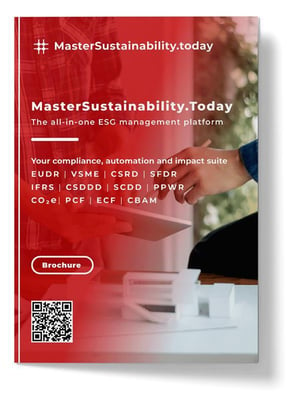Achieving PPWR compliance
Discover how the EU's PPWR regulation transforms packaging sustainability, promoting recycling, reducing waste, and fostering a circular economy across Europe.
An introduction to PPWR
The Packaging and Packaging Waste Regulation (PPWR) sets strict EU-wide rules to reduce packaging waste, requiring companies to design recyclable packaging, meet reuse and recycled-content targets, and take responsibility for the collection and reporting of their packaging.
In the coming years, companies can expect tighter compliance deadlines, harmonized EU standards, and increasing pressure to redesign packaging and supply chains for circularity.
In this article we elaborate on how the PPWR works, what it means for companies and how to stay compliant.
How does the PPWR work?
The regulation introduces rules for the entire lifecycle of packaging from design and production to disposal and reuse. It requires that packaging be recyclable by design, meaning companies must rethink formats, materials, and processes that stand in the way of effective recycling.
2.1 Goals of the PPWR
-
Reduce packaging waste by cutting down unnecessary and single-use packaging.
- Make all packaging recyclable by 2030, with clear design-for-recycling rules.
-
Harmonize packaging rules across the EU, ending national discrepancies and improving the internal market.
2.2 For who it will make a difference
The PPWR in principle applies to all entities that place packaging on the EU market, including manufacturers, importers, brand owners, retailers, online platforms, and packaging producers.
However, the regulation allows for certain exemptions and lighter obligations. Entities regarded as micro-enterprises (with fewer than 10 employees and either annual turnover or total balance ≤ €2 million) may be partially exempt—especially from some design, reuse or refill, or single-use packaging bans—though they are not fully exempt from EPR and reporting obligations.
Download an overview of the platform
See how our automated PPWR module fits into an ESG platform.
Timeline

Entry into Force
The PPWR entered into force on 11 February 2025, with its main provisions applying after an 18-month transition period starting 12 August 2026.
2030: Design for Recycling
From 1 January 2030, all packaging must meet “design for recycling” criteria, achieve recyclability grades A–C, and comply with minimum recycled-content requirements for plastics.
2035: Recycling at Scale
By 1 January 2035, packaging must be recyclable at scale, supported by EU-wide infrastructure to ensure actual high-quality material recovery.
2038: Phase-Out of Grade C
From 1 January 2038, packaging with grade C recyclability will be banned, leaving only grades A and B permitted.
2040: Higher Circularity Targets
By 2040, stricter recycled-content rules and stronger reuse and waste-reduction obligations will apply across sectors.
How to achieve compliance
Staying compliant with the PPWR requires a structured approach. Companies should begin by mapping all packaging they place on the market, identifying which items need redesign to meet recyclability, recycled-content, and labeling requirements.
Next, they must engage suppliers to verify material composition, set up data collection and reporting processes, and prepare for participation in extended producer responsibility schemes. Continuous monitoring will be key, since obligations will tighten over time with new reuse targets and recyclability criteria.
Let's break this down into manageable steps:
Starting with PPWR
Step 1 – Map your packaging
Create a full overview of all packaging you place on the EU market, including primary, secondary, and transport packaging. This gives you a clear picture of where PPWR will impact your business.
Step 2 – Identify compliance gaps
Compare your packaging portfolio against PPWR rules on recyclability, recycled content, labeling, and reuse. This highlights where redesign or supplier data is needed.
Step 3 – Redesign and involve suppliers
Work with suppliers to validate materials, secure certifications, and redesign packaging to meet recyclability and future reuse requirements. Early collaboration reduces risks and ensures smoother adaptation.
Step 4 – Set up reporting and monitoring
Implement systems to record, track, and report packaging data. Software tools can automate compliance tasks, simplify reporting, and give real-time insights to stay aligned with upcoming deadlines.
The role of software
Compliance software helps collect and validate packaging data, track recyclability and recycled-content targets, and generate reports for authorities.
By automating these processes and connecting suppliers, it reduces administrative burden and minimizes compliance risks. With a solid process and real-time insights, companies can adapt quickly to new PPWR requirements and stay ahead of upcoming deadlines.
For more information about compliance software we suggest to download our guide or to schedule a session with one of our experts on this topic.
Learn what an ESG platform can do for you
Download the brochure
Receive support from our team and effortlessly meet your EUDR obligations with a digital solution. Now and in the future.
This provides insight into the functions and features of our platform.

Schedule a Demo
Take a decisive step towards achieving your ESG goals, mitigating risks, and building a more sustainable future. Schedule a demo today!